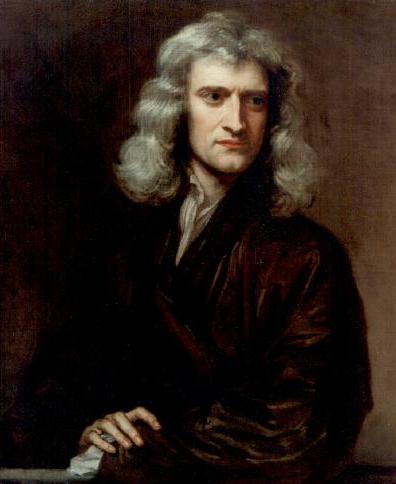Gravity
Cosmologist Sergei Odintsov on Newton’s law, modifications of general relativity, and the essence of gravity
faq | November 15, 2016

Gravity is described as gravitational force, the gravitational interaction, one of four interactions that we so far know in the universe, the others being strong, weak, and electromagnetic interactions. The gravitational force is somehow different from the other three, which act at very small scales and at very small distances. In turn, gravity, as far as we understand it now, is important at very large distances, which are comparable with the distance of our universe, with the large-scale structure of the universe. In this sense, the solar system size is still small to see all the expected effects of gravity.
History of Research
The history of the topic of gravity, as it is understood now, probably starts from Newton’s law. Of course, not going into what people were thinking before. Eventually, one of the first persons who tried to understand the earth’s gravity in a more or less consistent mathematical description was Newton. His law is very simple. Two bodies with masses attract each other with a force that is proportional to their masses and inversely proportional to the square of the distance between them. Of course, we can immediately apply this law to the solar system. But we have to be quite careful. We should consider the body in the sense of a center of mass; the body should be considered a kind of particle, a very massive particle located in the center of mass of the body. Even in this description, there appeared some problems related, for instance, to the distribution of density in the body. Even though we can approximately consider a planet as some model where all mass is located in the center of mass, it still occupies some space in the solar system. So it is already not so trivial on the level of Newton’s law.

Image: Sir Isaac Newton. Sir Godfrey Kneller. 1689 / Wikimedia Commons
When we started to study the motion of the bodies, spherical bodies like planets, already in the solar system, we found that there are deviations from Newton’s law. And that is one of the indications on which the generalization of Newton’s gravitation was proposed. Actually, at the beginning of the XX century, there were proposed several different gravitations. But among them, the best in the mathematical sense, a more concise theory, in a physical sense as a theory that satisfies the Solar system tests and turns out to be independent of the coordinates system choice, is general relativity or Einstein’s gravity. Everything works perfectly within the solar system with general relativity. So when we investigate the universe’s evolution and its regions which are located extremely far from our Solar system, we apply general relativity. However, it is not apriori known that GR is correct at large scales. Hence, in principle, we may think about other theories which coincide with general relativity predictions in the Solar system but may deviate from it at very large scales or at the very early universe.
General Relativity
General relativity is a covariant theory to describe gravity. Of course, mathematically, it is very beautiful, but at the same time very complicated theory. The reason is that when we apply it to the evolution of the large-scale universe, basically speaking, we arrive at a system of differential equations. Eventually, very few systems of differential equations have a general solution in mathematics. This particular one is a very complicated mathematical system. Of course, physical considerations help to simplify this system and to make it reasonable so that it may be really applied to the mathematical description of the universe’s history. The Space-time of the universe is characterized by the so-called metric tensor; naively speaking, it is a kind of invariant variable. A metric tensor consists of sixteen components, but due to the fact that it is symmetric, not all components are independent of each other.

Image: Schematic spacetime curvature / wikipedia.org
Actually, only ten components are independent ones. However, our astronomical and astrophysical observations strongly indicate the isotropic and homogeneous universe. Furthermore, this universe is nearly spatially flat. If this is true, then the degrees of freedom, or better say, independent components of the metric tensor, are reduced. Effectively it is reduced to only one component, which is called the universe scale factor and which represents kind of the main cosmological variable. Hence, a scale factor of the universe is a function that describes the time evolution of the universe. Thus, instead of the system of differential equations in the theory of GR, we get only a single differential equation of the second order for this scale factor.
Of course, it is much simpler to solve a single equation than a system of equations. In addition, we have the conservation law of matter. Such a universe is often called the Friedmann-Robertson-Walker universe. Basically speaking, the Friedman-Robertson-Walker universe is a specific and eventually most realistic universe which is isotropic and homogeneous at large scales and depends only on the scale factor. Of course, one can consider other universes, which may also appear as solutions to the equations of GR. This system became a playground for our understanding of the universe.
Quantum Gravity
First, gravitational interaction is extremely weak if compared to the other three fundamental interactions. For example, we know that stable configurations like atoms are not created thanks to gravitational force; it is impossible to confine them by gravitational force. Gravity is extremely weak at microscopic scales. Eventually, we know that four fundamental interactions appear and act in different ways, but it is expected that they are consequences of some unknown fundamental unification theory. For instance, there exists a well-established theory that unifies electroweak and strong interactions (the corresponding construction is called Grand Unified Theory).
However, the corresponding fundamental theory was realized in the very early universe when physical laws looked different due to extreme external conditions. In the very early universe, the gravitational theory was essentially quantum theory. Quantum gravity theory acts at the energies which are typical of Planck energy, i.e., at the very early universe. Current elementary particle physics is studied in the universe where typical energies are very small; typical curvature is very small, but typical sizes are very large (billions of light years).

Modifications of general relativity
Actually, we need to know the behavior of a single variable (scale factor). If we know the behavior of this variable throughout the whole history of the universe, eventually, we will understand the evolution of the universe. However, it is an extremely hard task. For example, different works show that the universe passed very fast inflationary early time acceleration at the early universe. It means that in the early universe, right after the epoch when quantum gravity was important for some reason, the universe started to expand more and more quickly. This accelerated expansion is called an inflationary era. After the accelerated inflation, we believe the inflation stopped, and the universe transited to the era which is called the deceleration era. During this very interesting epoch, when the universe expanded with deceleration, it passed the radiation dominance era and then the matter-dominance era. Effectively, at this stage, the universe started to look as it is now: with the usual matter (stars, planets, etc.). Over 6 billion years ago, due to some unknown reason, the universe started to expand again with acceleration. Such a current universe is called a dark energy universe. How to explain the transition to the dark energy era?
If we consider only gravity, then we should do something in order to reach this acceleration because usual GR cannot explain it (forgetting about the famous cosmological constant problem). So the simplest task is to modify gravity in some way. If one adds the cosmological constant to the action of gravitational theory, one can consider Einstein’s gravity with the cosmological constant. Such a theory may describe the inflationary era, the accelerated evolution of the universe. However, immediately there appear a number of problems. First, it is difficult to get to the existence of such an era. In other words, we need to introduce a somehow dynamic scenario for the cosmological constant. The simplest generalization, in this case, is to consider not GR but its slight generalization, which is the scalar-tensor theory, i.e., gravity plus scalar field.

If we add to the theory extra fields like a scalar field, then these extra fields should appear in our theory of elementary particles. So if we use inflation, we should identify with some scalar particle of high-energy physics. For instance, there were many speculations that it could be the Higgs particle which seems to be discovered recently. However, if inflation was caused by the Higgs boson, the question is why it stopped acting after inflation. Furthermore, why it acted in one way in the early universe, then effectively disappear in the radiation-matter-dominance era, and start to act in another way later during the dark energy era? In other words, the consideration of extra fields which cause inflationary expansion leads to a number of fundamental problems.
Modified Gravity
Due to these problems the natural question is: could it be that there are no extra dark components of the universe and everything is caused by only gravity itself? Imagine that we have some gravitational theory with an unknown geometrical structure (in other words, with an unknown gravitational Lagrangian which characterizes this structure). This Lagrangian may look different at different universe epochs. So in a sense, with the expansion of the universe, we have a change of gravitational Lagrangian or, let us say, we have a change of effective gravitational force. For instance, some terms of the gravitational theory are dominant in the very early universe. Then, in this case, this gravitational Lagrangian would cause inflationary expansion. During inflationary expansion, the curvature of the universe was decreasing, so typical energies, typical characteristic scales, and energy scales were decreasing. Then the original Lagrangian was also changed. The change of this Lagrangian caused the exit from inflation to the deceleration era.
During this deceleration era, this radiation and matter-dominance eras, our gravitational theory is approximately general relativity. So general relativity perfectly describes the intermediate universe. However, during this deceleration era, typical curvature is decreasing. Somehow 6 billion years ago, some other gravitational terms which were irrelevant before started to play an important role due to this decrease of physical curvature, the role of dark energy. So now we live in the universe, which expands with acceleration. In this way, we have, in a sense, quite a unique and fundamental picture of the universe’s evolutionary history. We have a gravitational theory that describes the unified evolution of the universe. We do not need any extra components to describe one era than other dark components to describe the next era. In fact, in our works with Prof. S.Nojiri of Nagoya University, we proposed several such modified gravity theories which describe the universe’s evolution quite well.

Current Methods to Study Gravity
Many researchers continue their activities in the scalar-tensor theory. For instance, the study where inflation is caused by scalar-like Higgs particles or by some fluids is very active now. However, much attention is also paid to modified gravity. Each week we have 10-15 papers related in one way or another to modified gravities of different types. Black holes are studied in such theories too. Furthermore, we get better astrophysical data, and in some observational data, there appear indications that GR is not good enough to understand some phenomena occurring in the universe. From the general paradigm in theoretical cosmology 20 years ago, each research work should have proven that GR is correct. Now there are papers where there appear claims that GR eventually is not enough to describe whole astrophysics and, in general, cosmology. It is quite promising.
We need to get a number of observational data with which we can compare our theoretical cosmology predictions. That is all. So far, we have few observational cosmological effects. We need to extend this number, and we need to get the cosmological parameters with higher and higher accuracy. That is the purpose of all current research in cosmology. There are observations like the gravitational waves experiment or the so-called Planck experiment to get quantitative predictions about inflation. These experiments, which are run by teams of several hundred, sometimes up to one thousand people, should clarify observational features of the universe. But not only observations but also some extra experiments to check the accuracy on the Earth or in space, in the solar system. Not only to observe but to measure the deviations from predicted values. For instance, to estimate the possible corrections to Newton’s gravitational constant, which seems to be still in very good connection with the result predicted by general relativity.
Open questions
I do not rule out the possibility that even the current paradigm of the universe’s evolution history will change completely. For example, there are attempts to change the inflationary universe paradigm by the so-called bounce universe or cyclic universe. It may happen that in future we will see some proposal of such or another sort. Second, I do not rule out the possibility that, eventually, we may get in the near future observational indications that will change some details of the evolution of some era of the universe. However, for me the main open question is why the universe looks so. Why the gravitational theory appears in such a form? Why do we not see anti-gravitation? Indeed, we have some rules which are considered to be correct up to some point, and we apply them to describe the universe’s evolution. However, we do not have the answer to why precisely such a theory is the correct theory of universe evolution. Why precisely this type of evolution of the universe is the consequence of one of the solutions of our gravitational theory? In this sense, I believe that further study of gravity may help to answer this question, at least somehow. We continue the study of gravitational theories so that such theories would be consistent with the current universe evolution and with current observational data. That is one of the main lines I continue to work on.





























